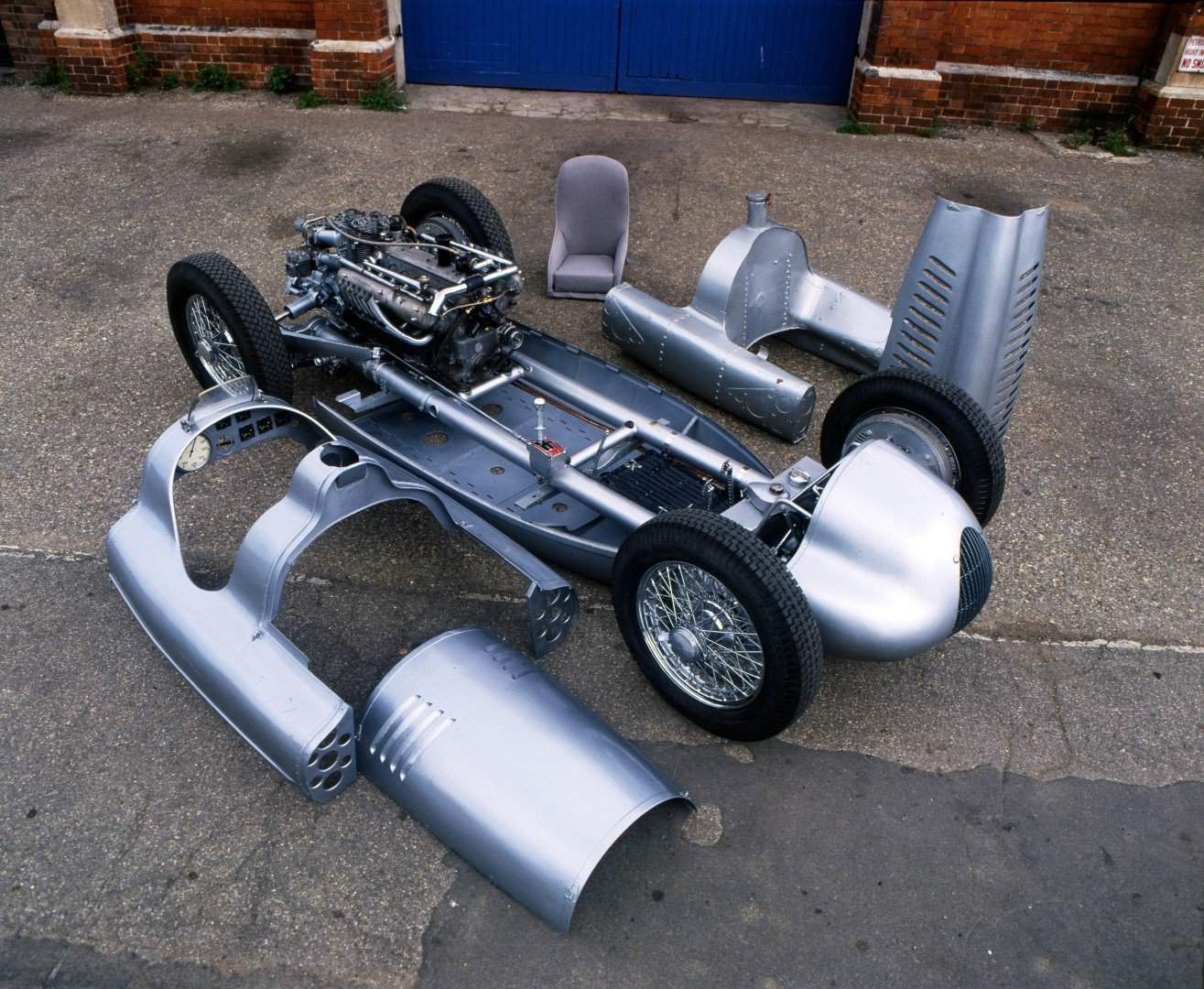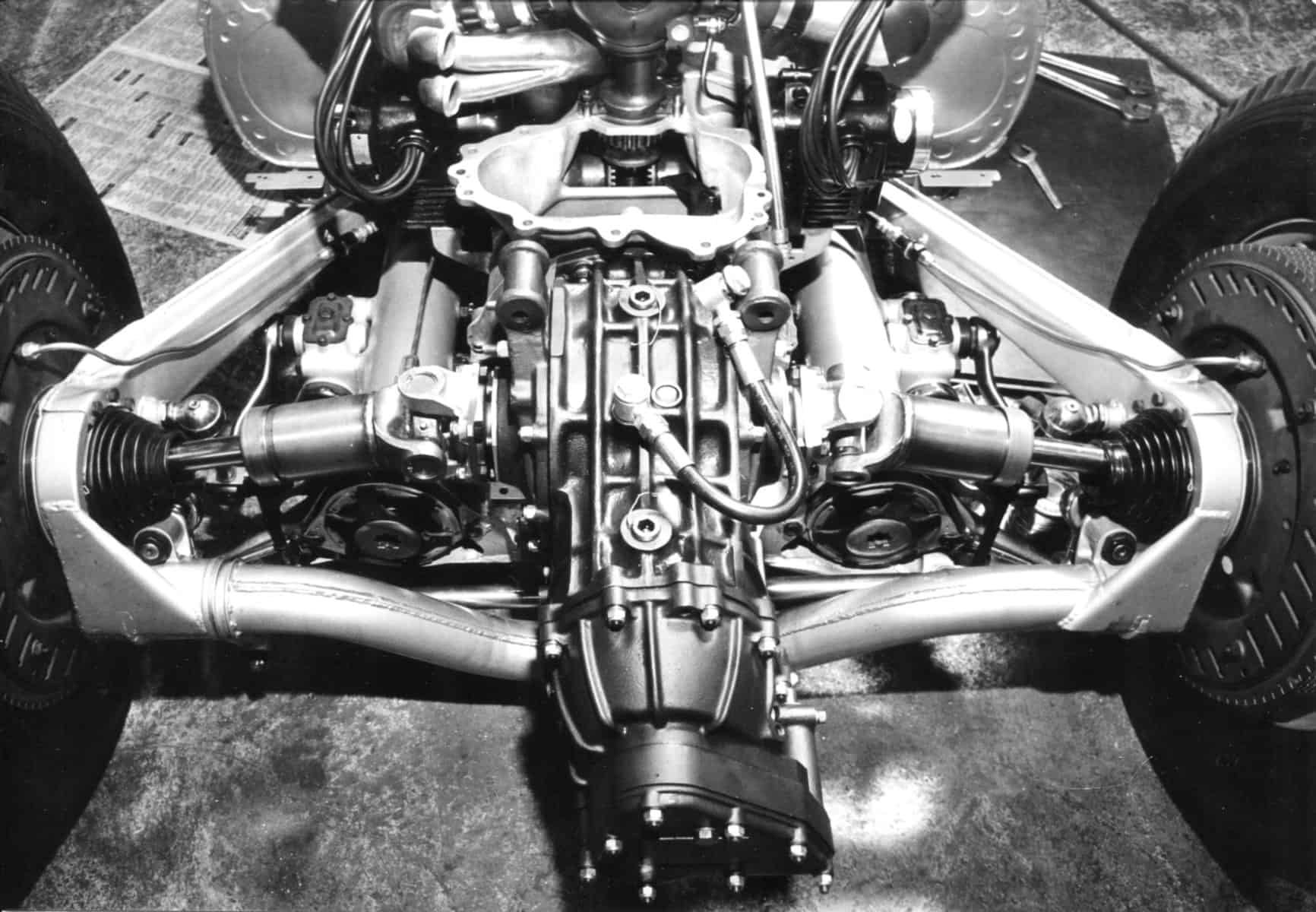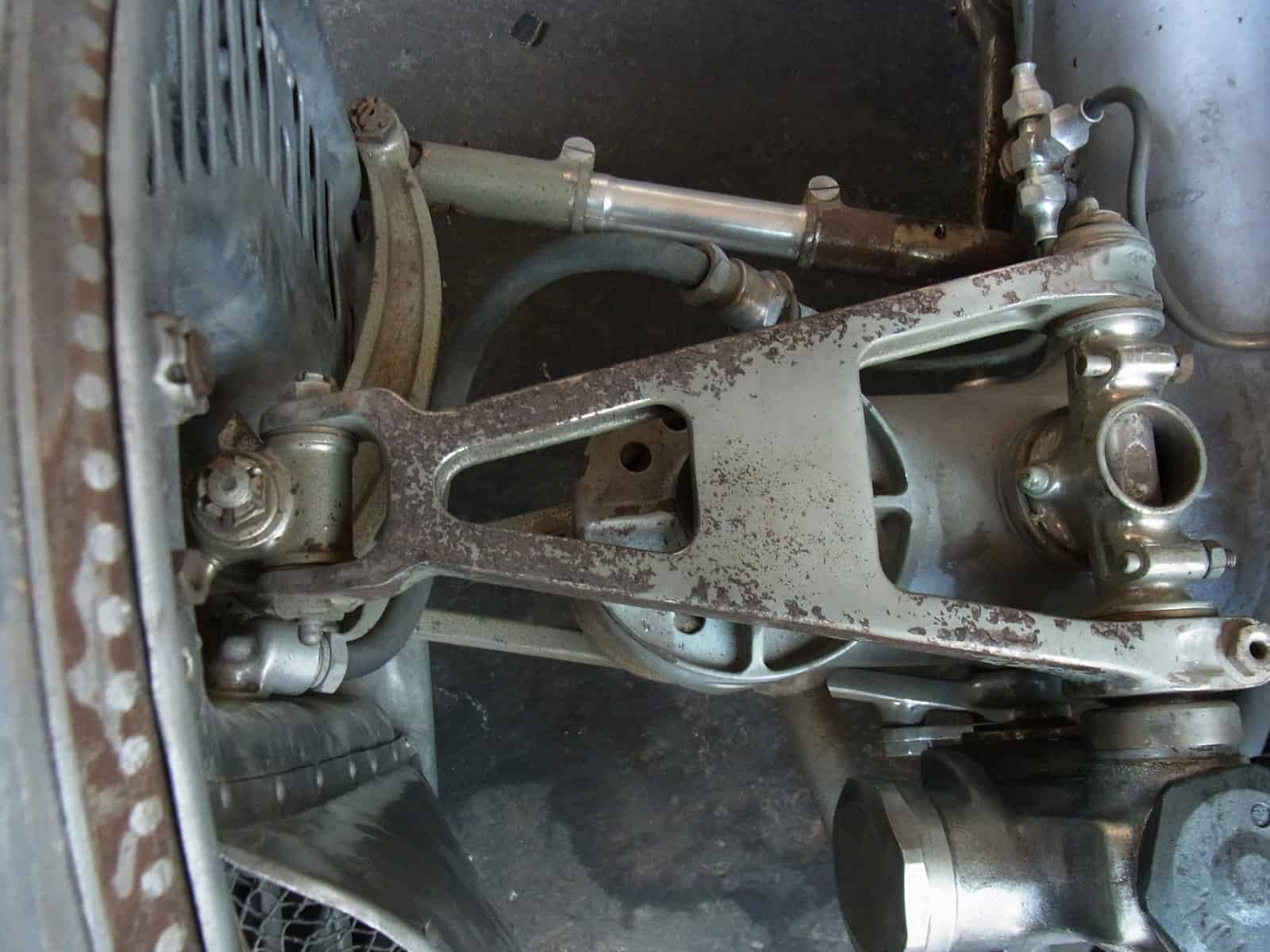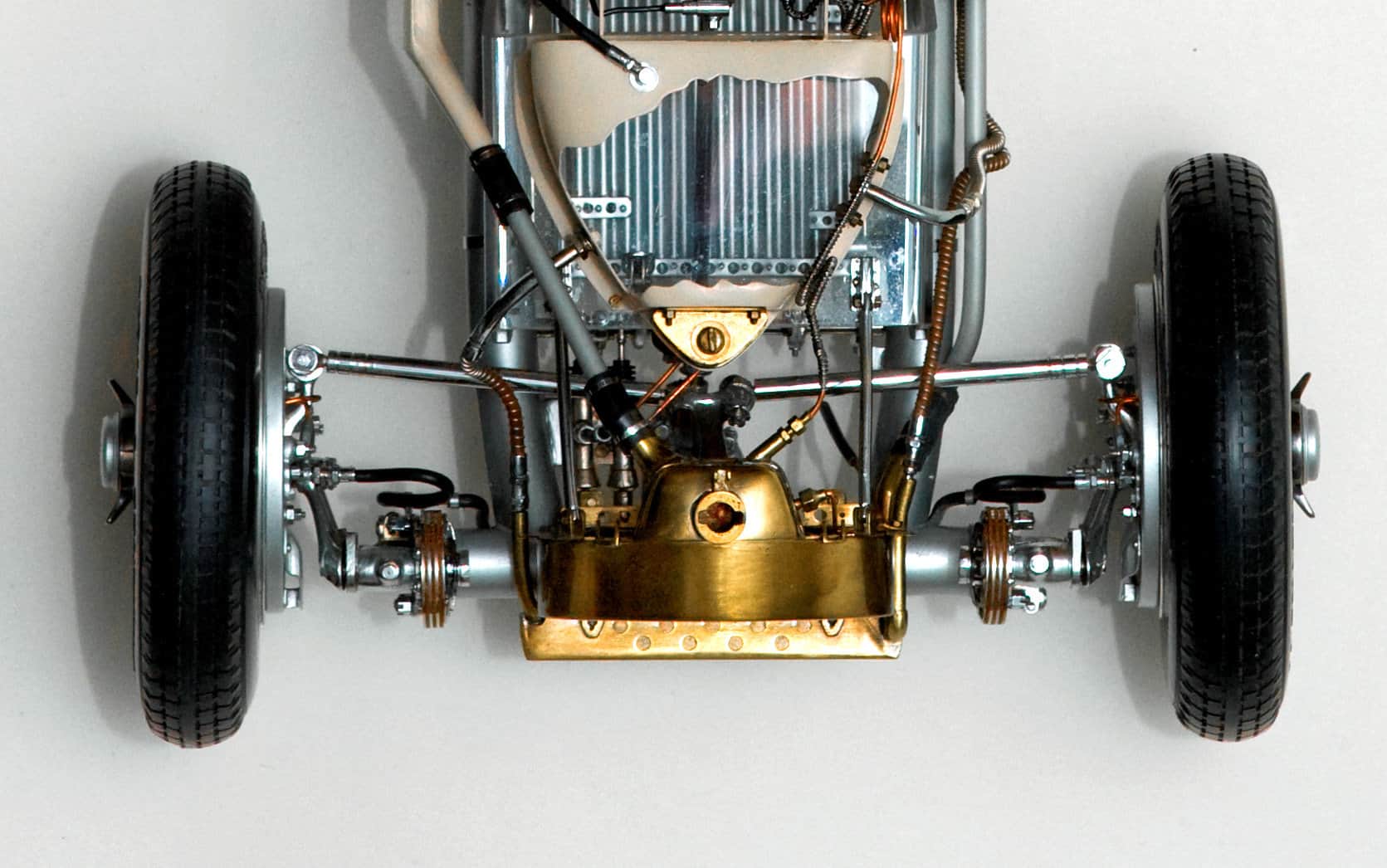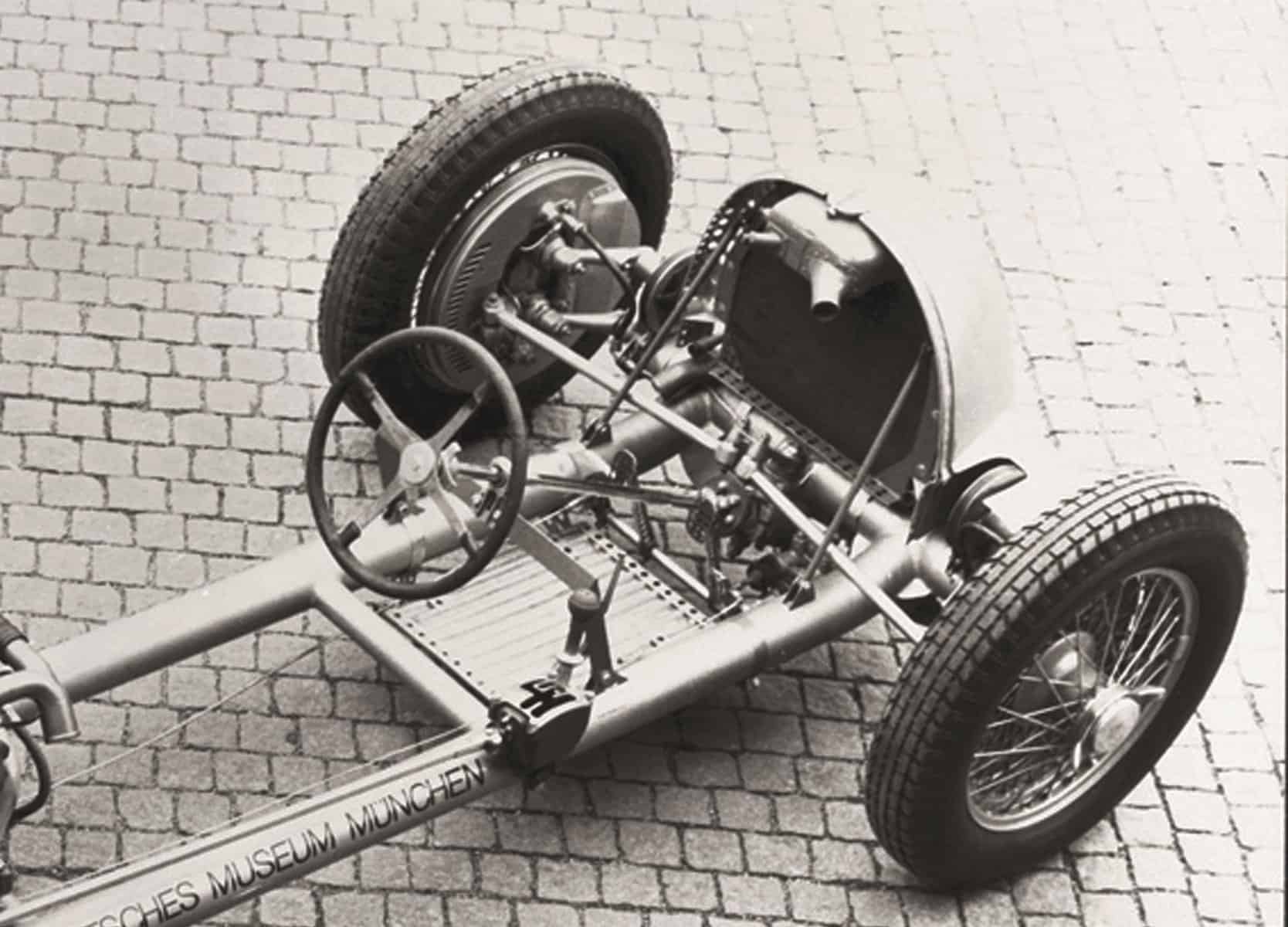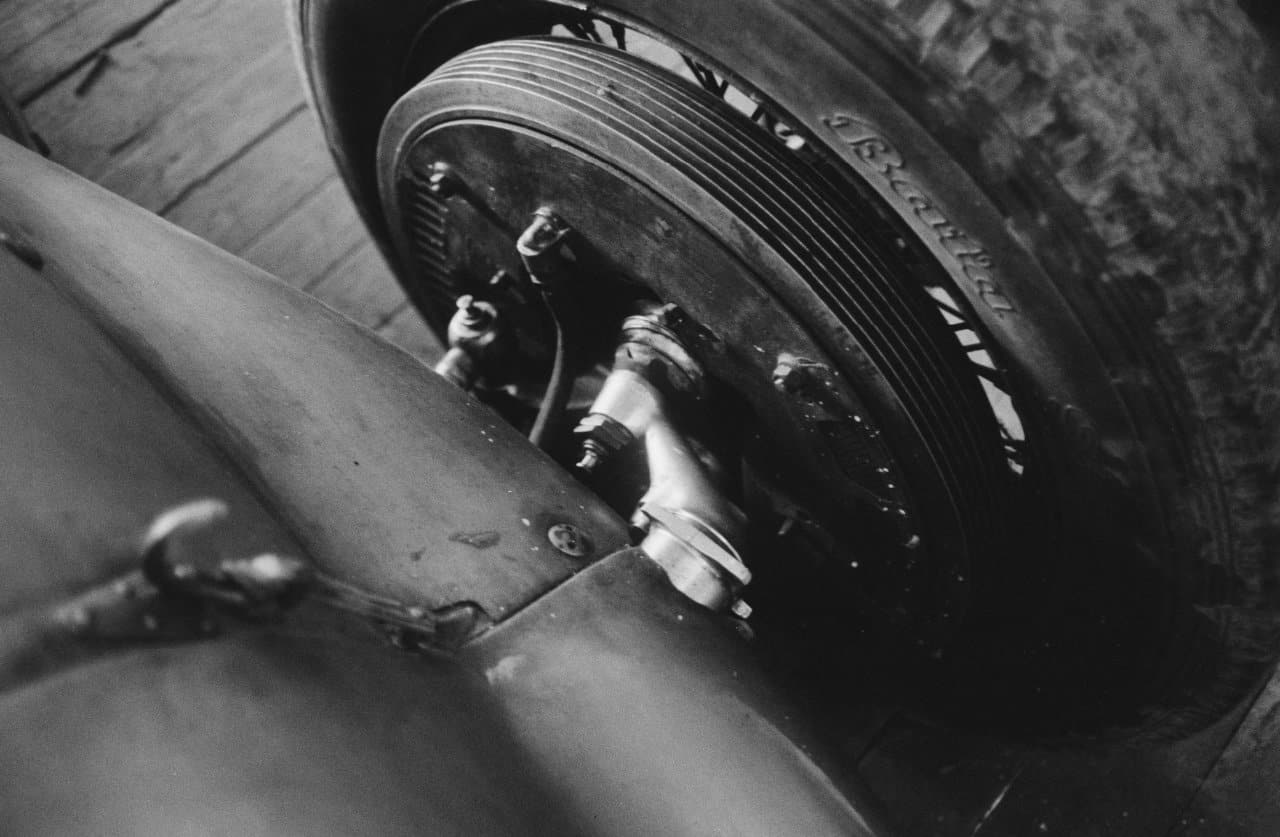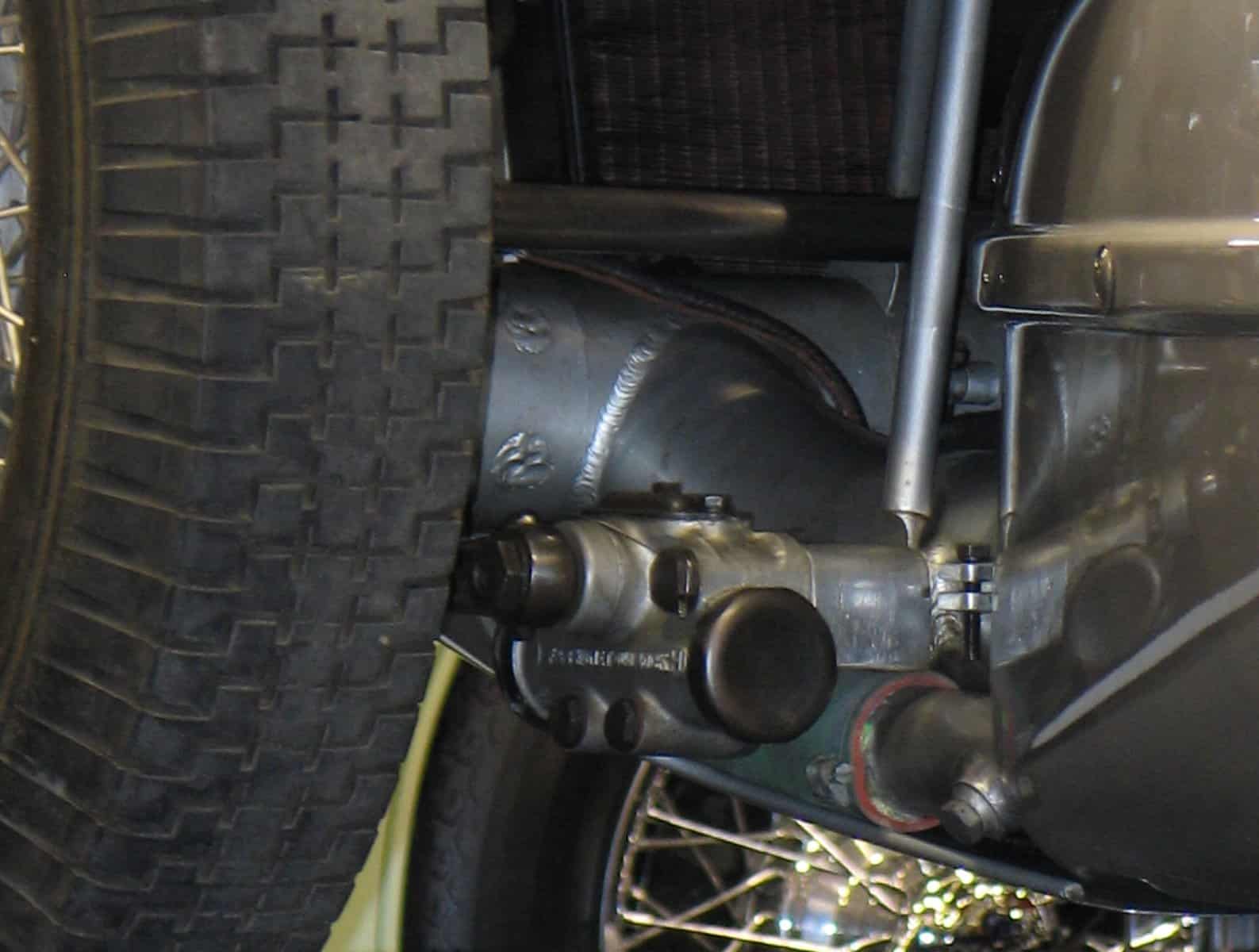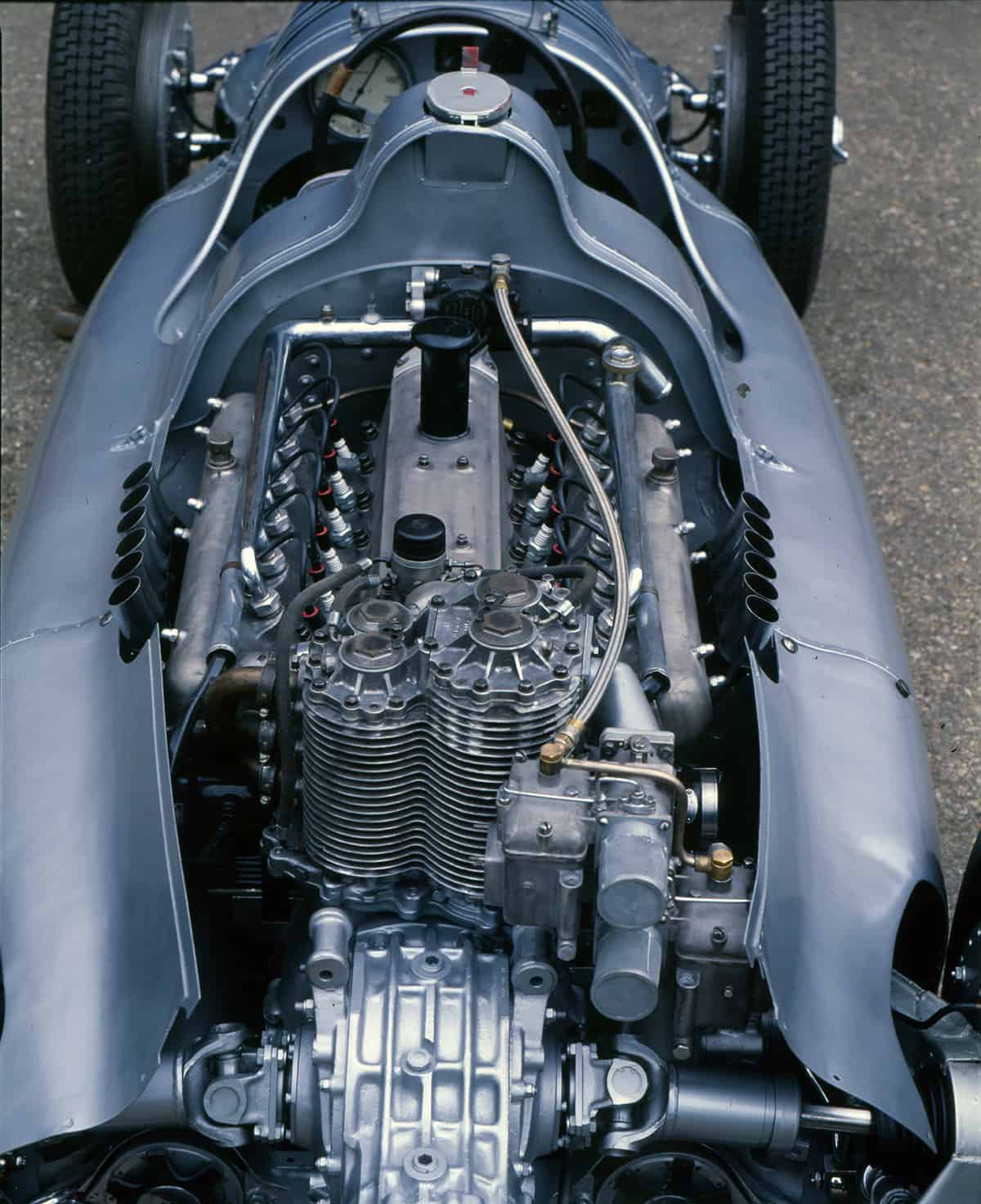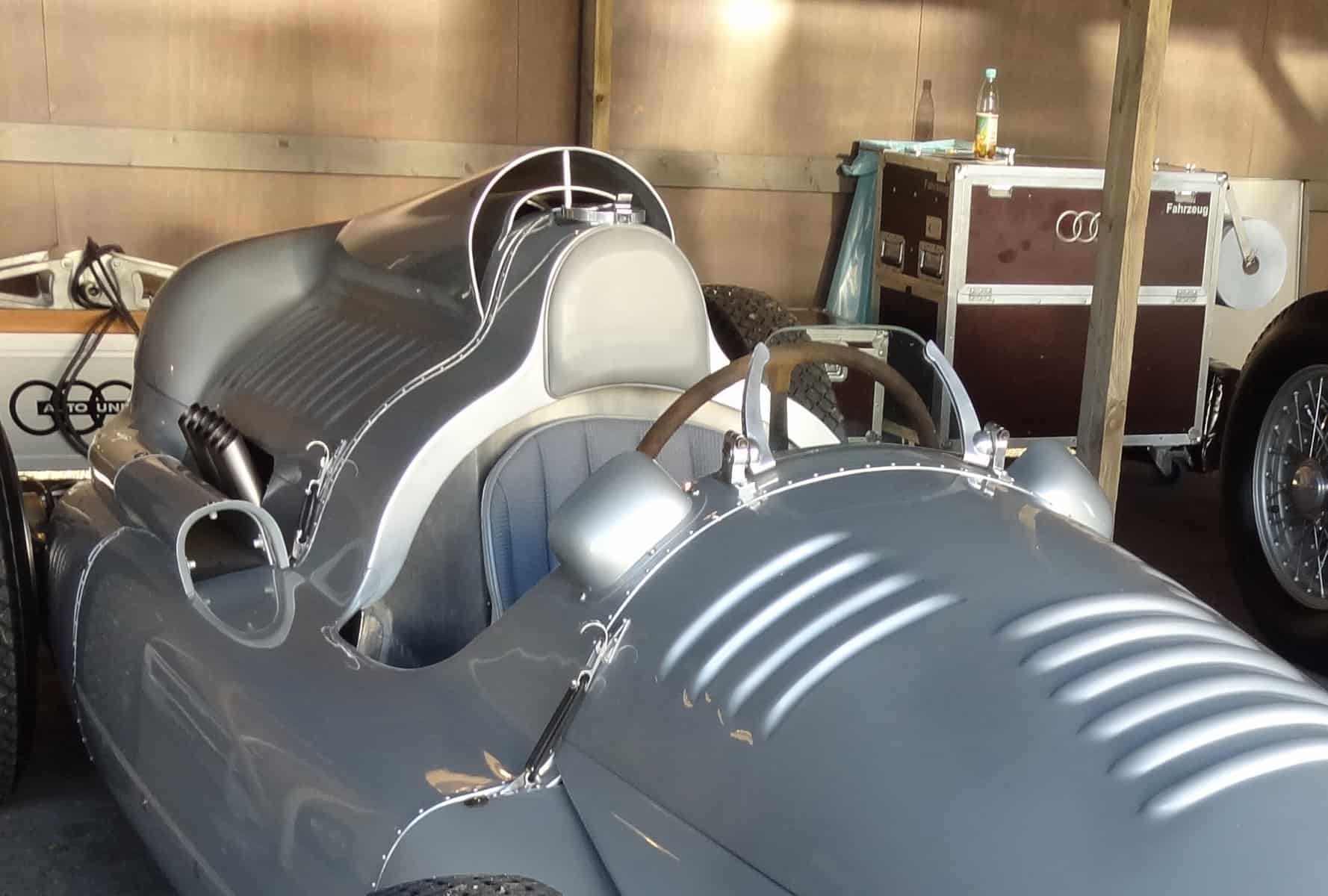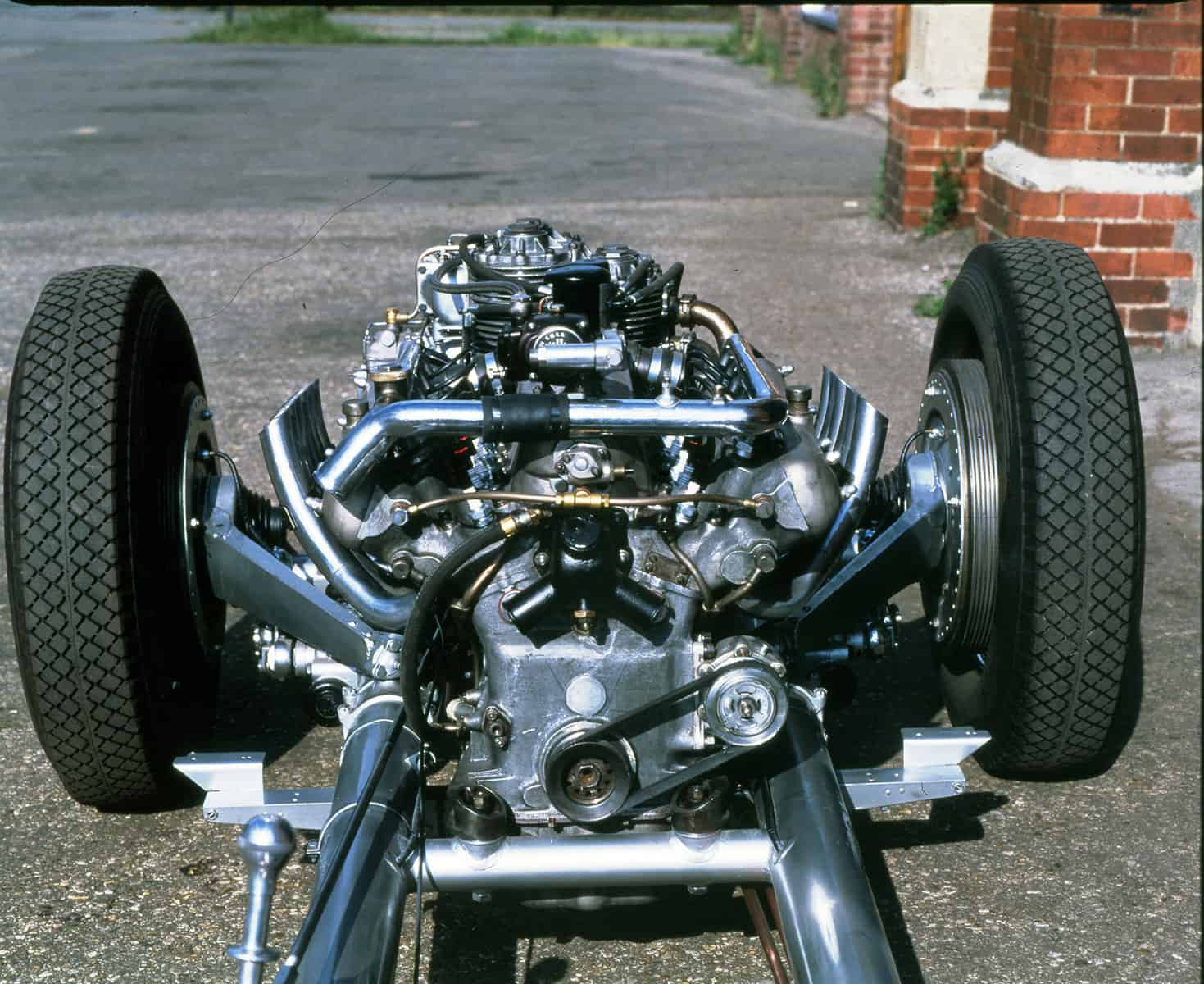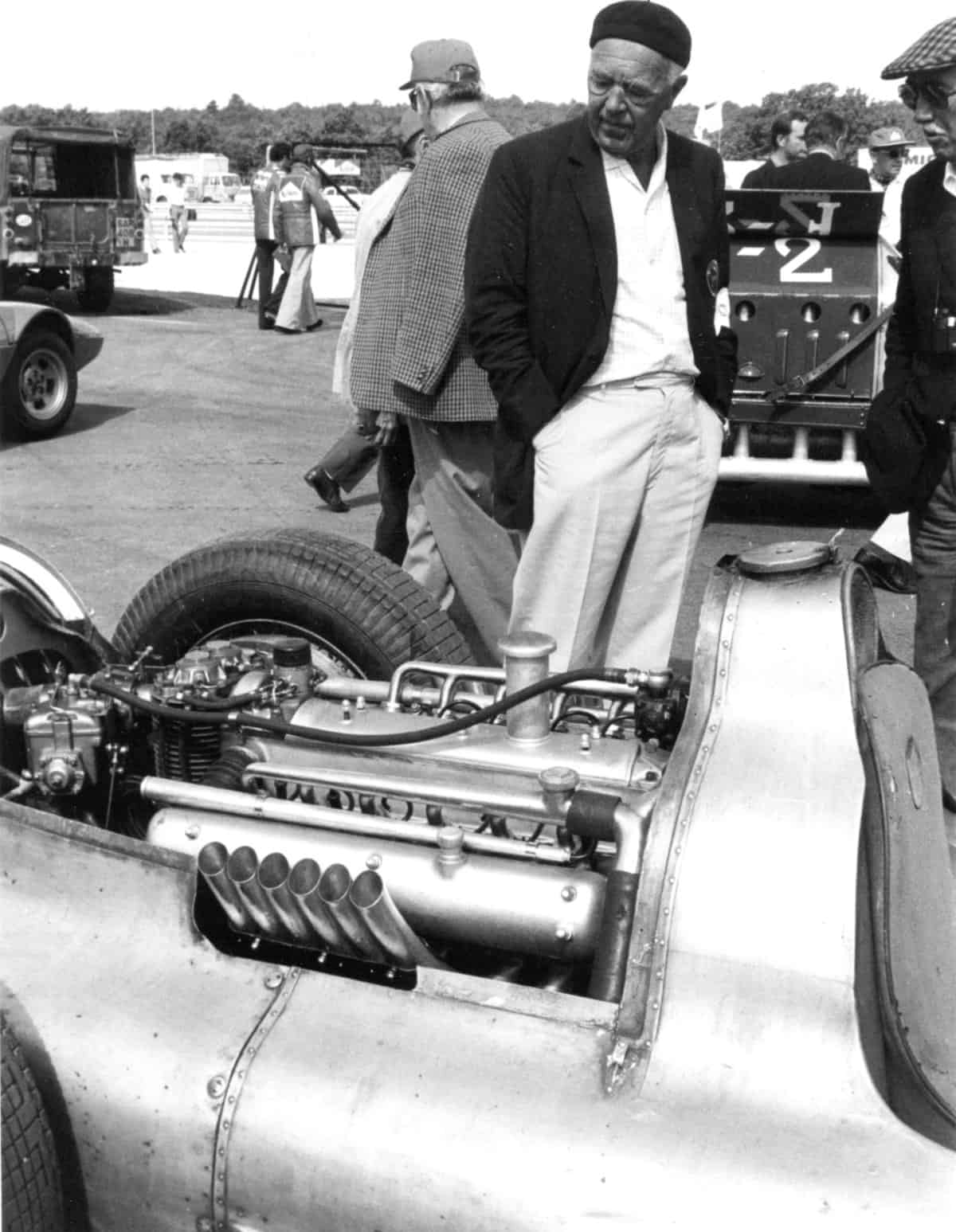Porsche vs. Uhlenhaut, Part 2
"The Eberan Solution"
BY: MARTIN SCHRÖDER
Last month, in the first part of this two-part article, we began to look at the epic competition between Ferdinand Porsche and Rudi Uhlenhaut in the late 1930s, with perhaps a bit more of an examination of the Mercedes design.
Now let’s take a closer look at what we’ll call “the Eberan solution,” after Robert von Eberhorst – a name whom, as we saw in the first part, most nonexperts are likely unaware. “Eberan,” as he was briefly called, was Porsche’s assistant who supervised the building of the Grand Prix cars in the racing workshop at Horch from 1933 to the end of 1937.
Above is a good view of the Porsche/Eberan solution with the fully integrated center/side tank, which required considerably less technological effort. A unique feature of all Auto Union GP cars for the mechanical adjustment of the chassis (today we call it set-up) are the tension belts, with which all important parts up to the steering gear could be mechanically adjusted, so driving could be adapted according to the requirements of the driver and the track.
The rear axle of the Auto Union Type D with the trailing arms and the de Dion tube passing under the gearbox.
Inclined longitudinal members and drive shafts like at the Mercedes, the de Dion tube is guided under the transmission.
Rear axle of the Auto Union Type D: de Dion tube under the gearbox, lateral guidance via Panhard rod.
Uhlenhaut’s front suspension resembles a modern front suspension with triangular wishbones, coil springs, and hydraulic shock absorbers. Above, the front axle with wishbone, coil spring, and hydraulic shock absorber on the W 154.
In comparison, the Porsche/Eberan suspension has a torsion bar with spring-loaded trailing arms.
The classic Porsche trailing-arms front axle (here on type C) that was used in all Auto Union GP cars from 1934 to 1939, and then in millions of VW Beetles and the Porsche 356.
The trailing-arms front axle with torsion-bar suspension was later installed in the VW Beetle and the Porsche 356 and built in the millions. Due to the long trailing arms of the Type C, the front wheels tended to flutter during strong braking, which had a negative effect on the driving behavior as well as on the driver’s hands. With the 16-cylinder Type C it was so strong that drivers with bleeding hands had to give up.
To overcome this disadvantage, Eberan in 1938 built a version with shortened arms, but the attempt failed.
The Eberan solution to prevent front-wheel flutter was to shorten the leg length of the trailing arms. For the 1939 version, a simple trick was used to create the transition from the trailing arms to triangular wishbones.
The additional flange-mounted strut marks the transition from the trailing arms to triangular wishbones that have been in use since mid-1939.
As with the Mercedes, Eberan/Porsche’s shock absorbers were hydraulic.
Both companies used V-12 engines with two-stage blowers, which produced approximately 480 hp in 1939. The Auto Union Type D 1939 featured so-called wet superchargers: stage 1 compresses the fuel mixture, which is then delivered into stage 2, and from there goes into the combustion chamber. Dual carburetors mounted on the side of the Roots-type supercharger of Auto Union Type D deliver the air/gas mixture in stage 1 and from there into stage 2 and then into the cylinder heads.
Here is the nearly identical Uhlenhaut solution carburetor, stage 1, and stage 2. In the W 154’s near-identical arrangement, the only difference is the horizontally arranged two-stage superchargers.
In the Porsche/Eberan solution, air was supplied by means of an air scoop above the driver’s head and a laterally mounted pipe.
Air was supplied for the Auto Union through an opening above the scoop and a lateral pipe.
Uhlenhaut solved the problem by installing an air catcher in front of the radiator. This prevented warm air with a larger volume from flowing to the carburetors. On the W 154, an air catcher is fitted behind the radiator grille, which transports cool outside air to the carburetors.
The Mercedes W 154 as rolling chassis.
The Auto Union car pictured here was loaned to the dealerships for advertising purposes. Note the missing side mirrors.
The one-piece drivetrain of the Auto Union Type D.
The W 154 was put through its paces by its designer Rudolf Uhlenhaut during a training session in Monza in 1938.
The W 154 with the chassis number 189436/6, developed between 1938 and 1939, has been raced no fewer than ten times, the last time being August 20, 1939, in Switzerland. Ten days later, the Second World War began, over the course of which Mercedes stored the GP cars in different places.
The W 154 described in this article was hidden in East Germany during the Second World War. After the war, it was taken to Poland by the scrap dealer Tabenski, who sold it to a Belgian dealer named Dobbler at the end of the 1960s – from Dobbler, the Schlumpf brothers finally purchased it.
The Auto Union Type D described here was lent to dealers by Auto Union AG in the 1930s for advertising purposes; at the outbreak of WWII, it was at the Auto Union dealership in Prague, and later came into the possession of the Czech racing driver Pohl. Hubertus Graf Dönhoff bought the car from him in 1974 via the foreign trade company Artia and showed it to the public for the first time at the French GP in Dijon.
Hubertus Graf Dönhoff first presented the Auto Union Type D exported from Czechoslovakia at the GP de France 1974 in Dijon. Designer Robert “Eberan” von Eberhorst is seen in the background.

